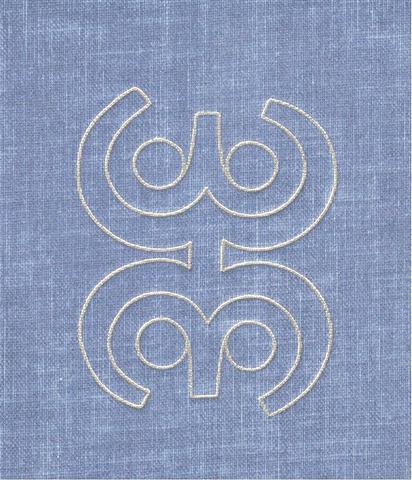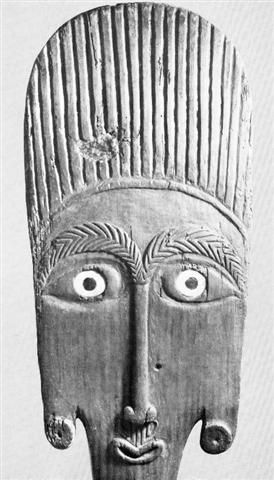5. The hard cover (vol. 2) of the report from the Norvegian archeaological expedition to Easter Island (Heyerdahl 4) bears a striking design:
The picture is transferred from a stone ball found "... between the lava boulders covering the ahu at Hanga-tetenga ... The sculpture is almost spheroid, with a slight flattening of the ventral side, the rest of the surface being covered by a double-headed animal carved in low relief in such a manner that the heads face in opposite directions on each side of a round mutual body." (Heyerdahl 4) I guess it could be a picture of the 8th son of Tu, Gagana. The god has two faces and there is a certain resemblance between these and the top part of Eb6-24:
Though the bottom part of Eb6-24 is apparently framing the empty eyes of the stone ball mata. The 'eyebrows' are not symmetric, perhaps because the two halves of a year are assymmetric; south of the equator summer is shorter than winter and the 'eyebrows' could represent these two seasons. The 'eyebrows' are like bent henua (or bent branches), one a little bit longer than the other. The longer one is also marginally thicker at the 'trunk' of the 'tree' (the nose). The idea of a nose being like the trunk of a tree is visualized in the face of this ao:
|


